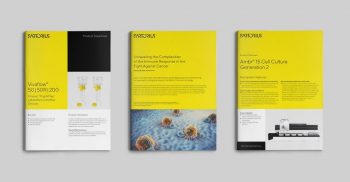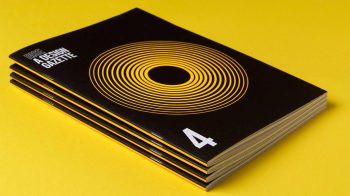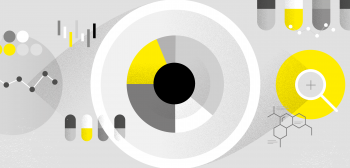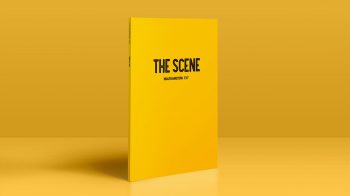The role of emotion in buyer decisions
By the time we reach 30, it’s been reasoned we have seen close to two million ads. Is it any wonder they all just seem to blend into one, and we become unable, and subconsciously unwilling, to differentiate one ad from another.
Imagine trying to process all that information: our brains would literally seize up. Which is why we filter. We filter by the media and channels we use but also by using our most trusted purchase guide, gut feel.
You see, us humans, we’ve worked out that our best defence against all the noise and marketing rogues trying to sell us stuff is to not really think about it at all.
Economists and cognitive and social psychologists have all reported at length on the fact that 90 per cent of our ‘decision making’ activity is generally performed subconsciously. ‘Subconsciously’ literally means not consciously thinking. It is thinking below awareness, on autopilot, driven by emotion rather than cognitive (memory, judgement and reasoning) thought. Gut feel.
The human touch
Now as a human being, I agree absolutely. As I take myself off ‘social’ for the weekend, consign the weekly Toast direct mailing to the recycling and politely close the metaphorical door on LinkedIn, I can feel the faint breeze of liberty wafting through the comb over.
But with my marketer’s hat on, the question I have to ask myself is this: if the majority of consumers are doing their level best to avoid me and are making the vast majority of their daily decisions on autopilot, how can I, in what I do and advise others to do, really challenge and change their behaviour in my favour?
Make it emotional
The answer is, make it emotional. Using emotion to drive sales is an old tactic and an increasing trend. Pulling at the old ticker is continually shown to create preference, lead decisions and be about twice as effective as rational advertising at getting and keeping our attention. The Institute of Practitioners in Advertising (IPA) ran a study around emotional advertising and found that of emotional ad campaigns, 31 per cent reported very large business effects after 1–2 years, compared to 16 per cent for rational ads.
Going for the gut
First, the science. Emotions start by being processed subconsciously, only then moving into conscious evaluation. This is because emotional responses are biological responses that require no consideration or ‘conscious’ thought. Which means they act quicker and in more meaningful ways.
According to Dan Hill in Emotionomics: Leveraging Emotions for Business Success, ‘emotions process sensory input in only one-fifth the time our conscious, cognitive brain takes to assimilate that same input’. Not only that, but they are also more likely to ‘create lasting, instinctual impressions; and actually predispose us to follow the same course of action in the future’.
The drumming of the gorilla
Do you remember that Cadburys ad? The big fella on the drums and the ‘guvnors’ dulcet tones. Let’s be honest, it had very little to do with chocolate (did it have anything to do with chocolate?) but it increased sales of Cadbury milk chocolate by 9 per cent, increased favourability of the brand by 20 per cent and is credited for lifting sales across the brand’s entire product line. And it did so by appealing to emotional hooks in our subconscious minds.
By combining music (a sense of fun and enjoyment) with amusing images that required a low amount of attention, the ad seduced our subconscious and eventually a good number of us changed our buying behaviours – quite possibly without really knowing why.
So how does it work?
- It’s biological, baby, and it works likes this:
- We see an ad and it subconsciously tweeks an emotion in us
- That emotion then enters our conscious state for evaluation and becomes a feeling
In our conscious state, that feeling then influences our attitudes to both the sender and the message, and consequently our buying behaviour
Emotions create feelings, and feelings shape attitudes and ultimately drive our behaviour. This, in a nutshell, is why brands invest so heavily in communication that constantly tries to create emotional bonds between them and us. Clearly, their ultimate goal is to change our buying behaviour.
This is exactly how the Cadbury ad was able to increase favourability and sales for both the category of product and the company. The ad required little attention, was framed by a well-known song that evoked an emotional response (memories) in many of us and included a humorous and memorable video. Which all meant that when we went to buy chocolate, we remembered how we felt when we saw the ad, which, in turn, helped us to decide which brand of milk chocolate to buy.
In conclusion
As Maya Angelou once said, ‘People will forget what you said, people will forget what you did, but people will never forget how you made them feel.’ It’s very easy to underestimate the influence of emotions on decision making because we all want to believe we are in control. But it’s no surprise that brands and those clever agency types have been quietly working on our emotional filters for many years. From Oxo mums to models in pants in launderettes to meeting our paralympic superheroes to the John Lewis-inspired trend in sugary Christmas ads to Nike’s ‘What girls are made of’ to H&M’s homage to George Michael – whether it’s to make us laugh or cry, surprise, enrage or scare us – it pays to get emotional. And that class, is your biological brand lesson for today.















